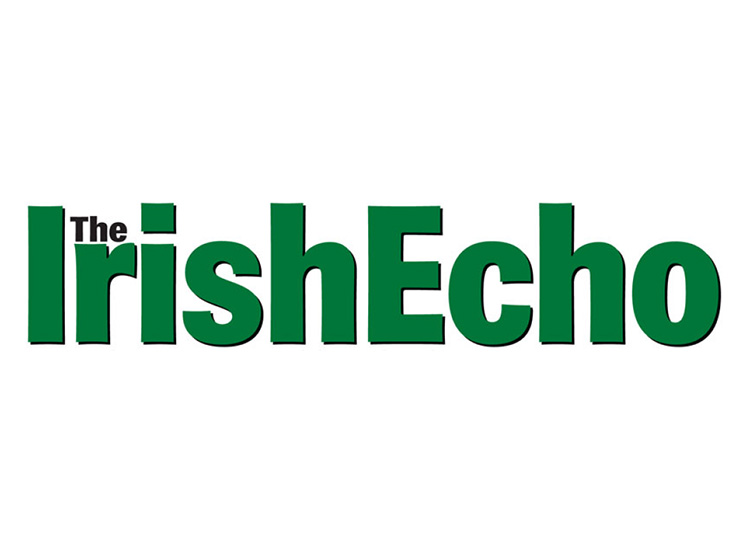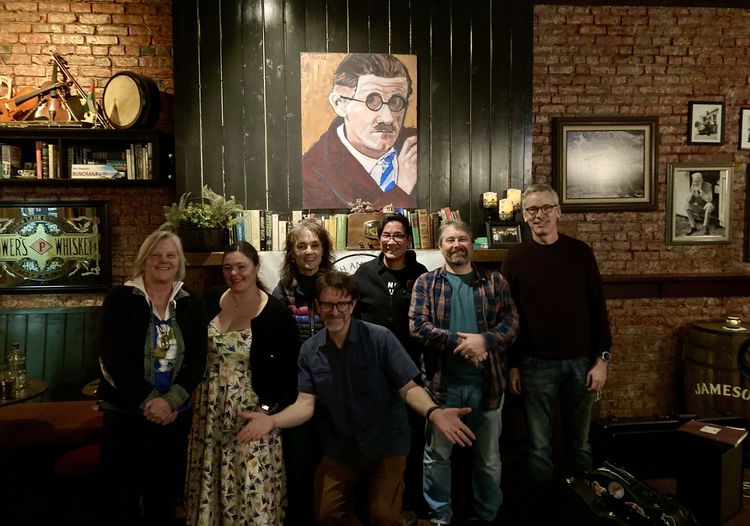Clare Horgan.
By Peter McDermott
Sean-nós singer Clare Horgan “has that capacity to silence a room with her song where all present join her on that journey,” Liam O Maonlaí of Hot House Flowers has said. American audiences have been experiencing that hold over the room over the past six months or so.
Master-singer in Connemara-style sean-nós Máirtín Tom Sheáinín has stressed some other qualities in addition to Horgan’s relationship with her live listeners, “Clár has a lovely personality and will travel far to bring this unique and under exposed music to audiences at home and abroad. I am certain that her audiences will gain immense pleasure from the songs and from her very personal delivery of these.”
The Echo caught up with her recently to ask some questions about her music and her time in America.
What is sean-nós music?
In its purest sense, sean-nós music means Traditional Irish songs in the Irish language, sung without accompaniment, translations into English or instrumental versions of these songs. While still a child, I learned a number of the Amhráin mhora, or more widely known “big songs” of this tradition, some of which originated outside of Kerry, most of my repertoire now comes from my native South Kerry or Iveragh (Uíbh Ráthach). On a more personal level, sean-nós music represents for me the first music I ever heard and the music that connects me most closely to my mother and to my childhood.
Tell us something you and your family background.
I am the second eldest of five. My father was a farmer’s son from Ballyroe, Tralee, Co. Kerry and my mother was the daughter of two national school teachers, her mother from Clare and her father a local from Waterville. My mother was a pharmacist before her retirement and my father worked in the local meteorological station as well as running a very busy caravan and camping park in Waterville, which won many awards. My mother has played music all her life and my father is an active historian having, at the age of 82, just launched a brilliant transatlantic cable trail in South Kerry.
My brother Seán O hArgáin is the principal of a Primary Scoil Lán Gaelach and has just been appointed president of the Irish language schools in Ireland. He’s a former Labour Party councilor and Lord Mayor of Kilkenny; my brother Colum is an electronics engineer who runs his own consultancy firm in Cork, my brother Flann works over in London as a consultant in the health-care sector and my sister Kerry is an Irish teacher in a secondary Scoil Lán Gaelach in Cork.

What brought you to the United States in 2019?
I have, over the years, come over to visit cousins in Boston and visited New York a few times. Last year, I applied for a P3 visa as a culturally unique performer and when I was awarded this, I won a grant from Culture Ireland towards the trip, along with some help from two Kerry businesses.
Your extended stay in the U.S. has had its interruptions, hasn’t it?
It has. I am very lucky to have both parents hale and hearty and into their late 70s and early 80s, and I like to spend time with them. They’ve had a challenging few months, but are doing great now
Tell us about your experiences in America
I decided to test the water by singing a few songs at events in the Irish embassy and at a few fundraisers. While musicians and audiences alike were very complimentary, I was disappointed that nobody seemed to be following up by calling me. My plan was to return to America and do some gigs and I was confused by the lack of follow through. I assumed it was an American thing. I then discovered by chance that, unknown to me, I had voicemail set up on my U.S. phone. I was very amused to hear 38 messages from all these nice people inviting me to perform at everything from book launches to weddings and festivals. Since my arrival in May, I have been really delighted to be received, with great warmth and have had a lot of fun along the way.
I continue to be really surprised by audiences who often have no understanding of the Irish language and yet are so appreciative of even the longest most obscure sean-nós songs that I perform. This is a testimony of course to how beautiful these songs are which I am so lucky to have inherited.
Another thing that continues to amaze me is the love and generosity of Irish and American people that I meet. From lifts to airports to whole weeks in spare rooms from the fierce solidarity that is the Irish American network to friends and cousins traipsing across cities to spend time with me between gigs. From Music St in New Orleans to 49th Street, Sunnyside, from Watertown to Anchorage and from Maspeth to Medford, I am when I head home, going to seriously miss the tidal wave of support I receive here in America on a daily basis.
Two of the highlights for me have been a concert I did in June of last year at the Burren in Somerville invited by Brian O’Donovan from WGBH and an amazing folk festival called the Old Songs near Albany in Upstate New York. I love both of these events, and the icing on the cake for me was to have discovered a brilliant songwriter and accompanist based in Boston and teaching in Berklee called Mark Simos.
Are there different types of audiences?
Yes absolutely. Of the 25 or so venues I have performed at here in the U.S., one of my favourite places to sing is the 11th St bar in East Village New York and the Landmark in Hell’s Kitchen. The Landmark is an oak-paneled restaurant area with round tables giving you the feeling of having taken a trip back 100 years to the days of Bugsy Malone and the 11th St Bar is a really vibrant fun bar in the East Village where the atmosphere is electric. In both cases it is down to the attitude of the owners and especially to the bandleaders, Don Meade and Tony Demarco. They control the room very well and allow fun to co-exist with serious listening.
What are your other musical influences?
Growing up in the breac-Gaeltacht of Iveragh or Uíbh Ráthach in South Kerry, I was singing sean-nós before I could talk. By the age of 10 I was competing in sean-nós singing at the All Ireland Fleadh. My brothers, however, quickly introduced me to the music of Elvis Costello, Tom Waits, Freddie White, Mary Coughlan and Paul Brady. I had grown up with my mother being very interested in and playing traditional Irish music and Music Theatre and my father listening to the likes of Joseph Locke, John McCormick and Delia Murphy. In my teens however it was Jazz songs that really turned my head. On the day of my 16th birthday, while on a family holiday in Lough Kee Forest Park in Roscommon, I heard one of my father’s Frank Sinatra albums and this started a love affair with the music of the 1930s and ‘40s. I went on in the ‘90s to study jazz in Leeds in the UK and to record with some of the Ireland and Britain’s leading jazz musicians.
More recently, ‘Other singers who have made a huge impact on my work include singers like Máire Ní Chéileachair.., who won last year’s Gradam Cheoil award and with whom I have sung in the O Riada choir, Cor Ban Chuil Aodh, over the past five years. Kerrymen Sean Garvey, Seamus Begley and Tim Dennihy, and Corkman Iarla O Lionaird who would of course be huge influences on my sean-nós singing.
Being from rural Ireland I couldn’t avoid hearing ample amounts of country music and eventually I became hooked especially when I heard singers like June Carter and Linda Rondstad, Alison Krauss and KD Lang. Right now, however, I am immersed in my sean-nos songs and quite focused on these. There is something poignant about singing songs at the Irish centers here in New York, where the subject matter is not an abstract thing but something very real for the older men and women who are the very emigrants that have inspired the songs I sing and it is incredible that they are living here or 50 or 60 years. This is the most powerful feeling when I sing an Iveragh song that is relatively obscure and largely unknown even at home and I see a spark of recognition on the face of one of these people. It is so gratifying to feel that the woman or man who hears this song realizes that his or her history and heritage is something that is still remembered by us at home. It is very important to me that these women and men feel valued and respected and certainly not forgotten
Do you have any longer term plans you’d like to share?
I am working on my third album and this will celebrate some of the sean-nós songs as Gaeilge and in English from a number of the Gaeltachts of Ireland but will focus on the special songs of my native Iveragh.
I was really lucky, earlier this year, to have worked on the first four tracks with brilliant Dingle based musicians Donagh Hennessy and Gerry O‘Beirne, on the first four tracks and the next stage of the recording will involve a number of U.S. based musicians including Mark Simos.
See www.clarehorgan.com for further details and to view her full busy itinerary.








